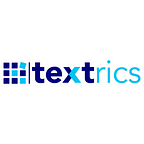Customers perceive a product in different ways, the intent being one of them. The intent is an abstract term that is hard to quantify. Understanding a customer’s intent helps companies redefine their marketing strategy and product improvements. They don’t have to rely on customer feedback or ad impressions.
In Intent Analysis, a customer’s engagement is mapped at multiple touchpoints. Using this measurement, the companies can target specific audiences with an improved advertisement strategy.
How does Intent Analysis work?
Sentiment Analysis is the first step in the Intent Analysis process. It helps in classifying the text to sentiments like positive, neutral, or negative. The message is analyzed and categorized as an opinion, a complaint, a suggestion, a doubt, or an appreciation. Based on this analysis companies can predict if the customer will buy, sell, recommend, or ignore their product.
The intent can be classified as Casual or Business intent. Social media conversations mostly come under casual intent categorization. A few examples of casual intent would be hello, morning, sorry, etc. Business intent, on the other hand, is focused to understand a customer’s intention towards a product or marketing strategy. For example, a customer reaching out with a query about the release date of a new smartphone.
Methods used for Intent Analysis
Deep learning techniques and Natural Language Processing are used to extract intents from messages or texts. A supervised learning approach is followed where the ML model is trained on a large data set and then used to predict new data points. In deep learning techniques, Recurrent Neural Networks & Long Short-Term Memory models are mostly used to build ML models. These methodologies are used because they can capture long-term dependencies.
How is Intent Analysis helpful for your business?
Sales and revenue drive a business’s success. Thus, businesses have to take a customer-centric approach in designing their products and marketing strategies. Intent Analysis plays an important role in all these aspects. Some benefits of Intent Analysis are:
- Customer preferences can be detected by Intent Analysis and addressed accordingly
- With Intent Analysis, the businesses can target specific audiences who are interested in buying products.
- The advertisement campaigns can benefit a lot from Intent Analysis. It can help identify which social media platforms are ideal for showcasing ads.
- Spams, unwanted emails or phone calls can be detected through Intent Analysis.
Use cases of Intent Analysis
Intent Analysis helps companies identify if a customer is actively looking to buy their product or services. Thus, Intent Analysis can be applied to:
- Content recommendation — The recommendation systems benefit from Intent Analysis to suggest better content to customers which in turn increases the engagement percentage.
- Chatbot features — Adding Intent and Sentiment Analysis capabilities to automated chatbot systems will make it robust as a product. The Chatbot will be able to provide better solutions to customers for their queries.
- B2B marketing — Intent Analysis helps in creating campaigns targeting specific audiences and driving marketing strategies by gaining insights from user messages or texts.
Intent Analysis provides directional guidance to marketing and advertising strategies for businesses by gauging customers’ intent. It is an efficient way of extracting insights from huge volumes of customer texts or messages available on the internet. So, if you wish to get an edge over your competitors, now is the time to invest in Intent Analysis.
Textrics offers text analysis to help your business propel and grow in leaps and bounds with just a click.
Sign up for our free demo now https://www.textrics.ai/websignup
